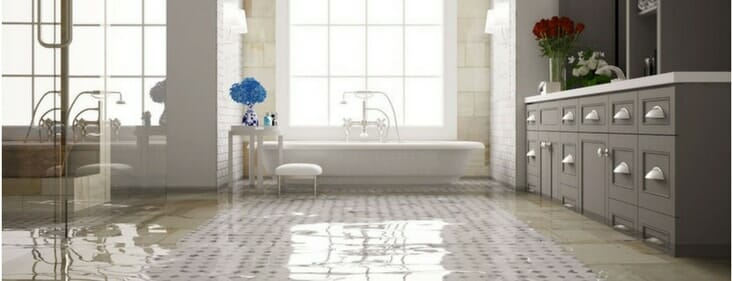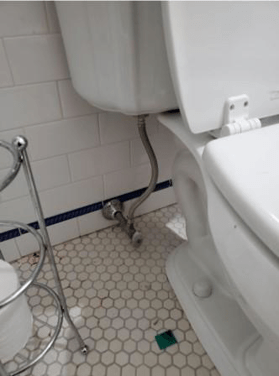How to Repair and also Stop Bathroom Water Damage
How to Repair and also Stop Bathroom Water Damage
Blog Article
This article below in relation to Common Causes of Water Damage in a Bathroom is relatively interesting. Read it yourself and decide what you think about it.

The shower room is very vulnerable for moist build-up as well as possible water damage due to the regular use of water in it. This article uses straightforward inspection methods to assist identifying water damage risks.
The regular use water in the bathroom makes it incredibly susceptible for damp buildup and also potential water damage. By examining it on a regular basis, you can minimize water relevant problems.
The following set of evaluations is easy to carry out as well as must be done as soon as in every 3 months in order to maintain your washroom healthy and to prevent potential water damages caused by the bathtub, the shower, pipe joints as well as plumbing, sinks, cupboards, as well as the bathroom
Do not disregard doing these assessments as well as be complete while doing them. Bear in mind that these easy evaluations can save you a lot of money by providing early indications for water damages
Bath tub as well as Shower
The shower as well as tub need special attention and upkeep. Examine the floor tiles and also change if broken. Ensure that there is no missing grout in between the floor tiles. Check as well as replace broken caulking at joints where the walls fulfill the flooring or the tub. Blocked drains and pipelines issues will prevent the bathtub from drying out as well as may indicate serious troubles underneath the tub. Consult with a specialist quickly to avoid structural damage. Focus on discolorations or soft locations around the tub walls as they might suggest an internal leak.
Plumbing
Signs for water damages are difficult to spot since a lot of pipes are mounted inside the walls.
Pay unique interest to flooring and also wall surfaces moisture and also spots as they may suggest an unnoticeable plumbing trouble. Inspect moisture degrees in adjoining rooms also.
Sinks and Cabinets
Sinks and also cupboards are revealed to wetness and moisture daily and also are frequently overlooked. Examine regularly under the sink as well as on the kitchen counter above it. Fix any drip in the catch as it may recommend drain issues. Look around the sink, sluggish draining pipelines may show a blocked drainpipe. Replace sink seals if they are split or loose.
The Bathroom
The toilet is a prone water joint. Check the water lines as well as search for leakages around the toilet seat, in the pipe, and also under the water storage tank. If you identify any indications of dampness on the floor around the bathroom, look for leaks in the toilet edge and also storage tank seals.
Know that hanging toilet bowl antiperspirants increases the possibilities for obstructions.
Water Damage Signs In The Bathroom To Avoid Cleanup
Musty smell
This is one of the easiest signs to catch because musty smells are so odorous. The damp, earthy, moldy smell should be a big red flag. The smell will develop when moisture gets trapped in surfaces, and begins to facilitate mold growth. Leaking pipes under cabinets, inside walls, and behind shower fixtures will cause moisture to stay trapped and not dry, which will lead to mold growth and spread. As soon as you notice any musty smells in your bathroom, have it checked for hidden water damage and cleanup signs.
Visible mold
If the smell isn’t there to give it away, sometimes you will actually see mold growth. Finding mold in your bathroom is a serious problem, because mold is very harmful to your health. By the time mold growth is visible, it also means that water damage has already occurred and been present for some time. The only way the mold problem can be resolved is to find the source of the moisture and get it stopped. To safely and adequately remove mold, you need to have professionals handle the remediation. Do not waste any time in getting mold problems addressed, fixed, and sanitized so that you can protect you and your family from the many respiratory symptoms caused by mold exposure.
Damaged floors
Bathroom floors should be able to withstand some exposure to water while still remaining in good condition. However, when excess exposure or water leaks occur, they will begin to damage even the most water-resistant flooring. If you notice any cracking, bubbling, staining, or warping on your bathroom floors, there is probably a water leak somewhere causing the distortion. If you notice areas of the floor have become softer, or even have a spongy feeling, there is probably damage to the subfloor. Subflooring is typically made up of plywood. When plywood is exposed to water or moisture, it will absorb it. Once it has become saturated, the weight of the excess water will cause the wood to swell and soften. Check the floors in your bathroom frequently to catch any of these sings before they lead to damaged subflooring.
Changes on walls
When water leaks behind walls, it will cause changes in the drywall. Peeling plaster, blistering paint, and soggy wallpaper are all good indicators that excess water is building up behind the wall. Water leaking behind drywall will cause it to swell and be soft to the tough. If you start to notice gaps along the trim of your walls, or where tile meets the wall, it could also be a strong indicator that there is a leak behind the wall. Any changes, distortion, or damage on the walls should be evaluated as soon as you notice it to prevent further water damage and cleanup.

As an enthusiastic reader on Preventing Water Damage in the Bathroom, I figured sharing that piece was a good thing. Those who appreciated our blog post please be sure to share it. Many thanks for your time. Visit again soon.
Get A Quote Report this page